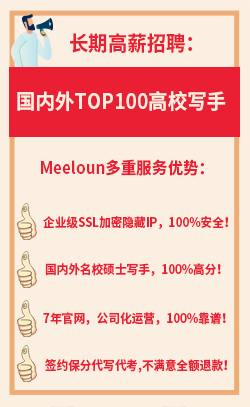如何写essay introduction
发表时间:2015-01-07 13:24:29 作者:admin 阅读:56次

什么是essay introduction?简单来说,就是文章的简介。好的文章简介能将论文的精华提炼出来,达到吸引读者的目的,更能为文章获得一个好的评价。下面我们就来谈谈essay introduction的重要性和写作技巧。
Centre for English Language Communication
The quality of an essay introduction often determines whether the essay gets read in the first place. Even if it has to be read, as in the case of essay writing assignments in a university setting, a fine introduction gives the reader a good initial impression, entices the reader to read on, and encourages the reader to give an excellent evaluation at the end.
Hence, an essay introduction serves to attract the reader’s interest, introduce the topic, and explain what the essay will be about. Correspondingly, an essay introduction contains three features that usually appear in the following order: an attention-getter, some background information and the central idea.
Getting the reader’s attention
Some common strategies used to attract the reader’s interest to an essay are:
- Relate a dramatic anecdote.
- Expose a commonly held belief.
- Present surprising facts and statistics.
- Use a fitting quotation.
- Ask a provocative question.
- Tell a vivid personal story.
- Define a key term.
- Present an interesting observation.
- Create a unique scenario.
Providing background information
Providing background information in an essay introduction serves as a bridge to link the reader to the topic of an essay. But exactly how long this bridge should be is largely dependent on how much information the writer thinks the reader will need in order to understand the issue being discussed in the essay and appreciate the importance of the issue. For much university writing (for which the readership may not be restricted to lecturers alone), one good rule of thumb for students to determine whether enough background information has been provided is to read the draft introduction to fellow students from other faculties and see whether they understand what is being talked about.
Stating the central idea
The central idea or thesis statement in an essay introduction is the most important part of the essay and is thus indispensable. The thesis statement is usually one or two sentences long and tells the reader what the whole essay is going to be about.
A thesis statement can be direct or indirect. A direct thesis statement gives a specific outline of the essay. For example, one of my students (in his essay entitled ‘The Qualities of a Successful Technopreneur’) wrote the following thesis statement: “The three core qualities that a technopreneur must possess to be successful are vision, a never-say-quit attitude and an innovative mind.” This sentence tells the reader what the essay is going to be about (i.e. the qualities a technopreneur must possess in order to succeed) and provides a structural outline (i.e. that the essay will comprise three main parts, each portion respectively covering one of the three qualities mentioned).
In an indirect thesis statement, no such outline is provided; however, the reader will still know what aspect of the topic the essay is going to discuss. For example, on the same topic, another of my students wrote this thesis statement: “In today’s rapidly changing technology market, only technopreneurs who possess certain qualities will succeed while those who do not will falter and fall in the battlefield.” From this sentence, the reader can still expect the essay to talk about some qualities of a successful technopreneur; but he/she will neither know exactly which and how many qualities the essay will cover, nor predict how many parts the writer will discuss in the main body paragraphs. The suspense given by an indirect thesis statement sometimes gives the reader a good reason to read on.
Once aware of the three features of an essay introduction and some of the options for the presentation of each feature, students can experiment with different options to see which one(s) creates the best effect for each essay.
References
Dornan, E.A. & Finnegan, M. (2003). The Longwood Reader (5th ed.). New York: Longman.
Folse, K.S.; Muchmore-Vokoun, A.; & Solomon, E.V. (1999). Great Essays: An Introduction to Writing Essays. Boston & New York: Houghton Mifflin.



